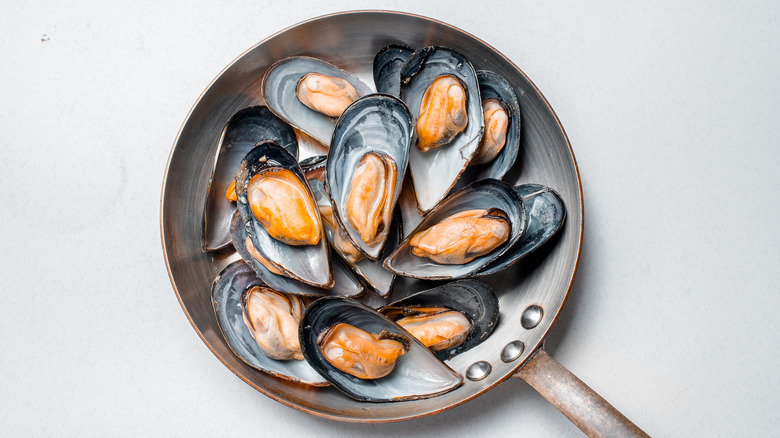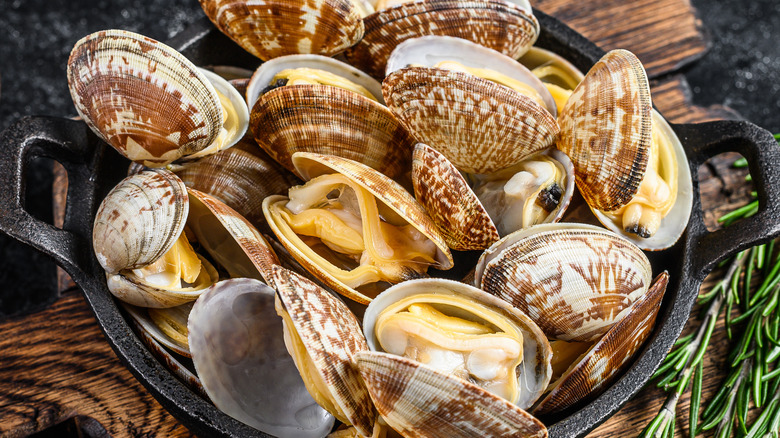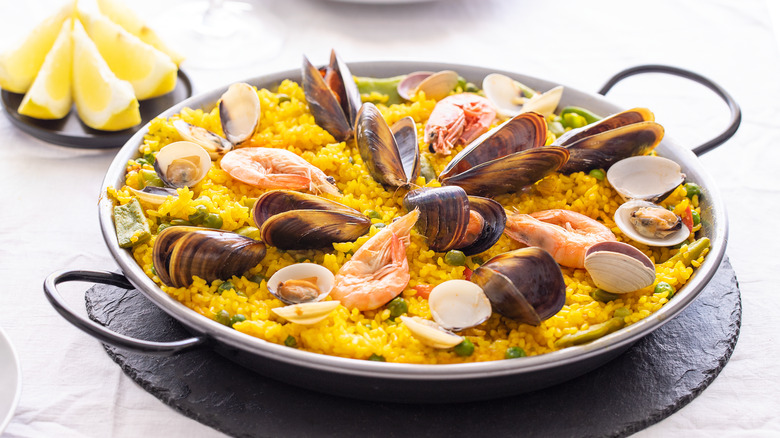What's The Difference Between Mussels And Clams?
Humans have been eating foods like mussels and clams long before cioppino or clam chowder ever graced a bowl. Per The New York Times, evidence suggests that coastal populations of Neanderthals in modern-day Europe were cooking and consuming shellfish well over 100,000 years ago. Some researchers even claim that eating shellfish helped early humans adapt to a harsh climate and expand their range.
These days, most people don't have to forage for their seafood themselves, but they do often order it from menus. According to Britannica, shellfish like mussels and clams are some of the most popular aquatic invertebrates eaten around the world. And while that may be the case, it's also true that many people only have a vague notion about the difference between mussels and clams aside from their general appearance and shape. As it turns out, their differences also include complex factors like anatomy, habitat– and, of course, taste.
The physical differences between mussels and clams
While digging the meat out of a mussel or clam, you may have noticed the differences in their anatomy. Mussels usually have a smooth black-blue or brownish, elongated shell, whereas clams have a rounded shell that's usually gray or beige and ridged. According to the organization, Ocean Conservancy, both mussels and clams are bivalve mollusks — meaning that they each have a hinged shell that separates into two parts.
Both filter feeders, mussels and clams can live in either freshwater or saltwater, but their behavior and biology show some marked differences (via EcoSpark). For instance, the complex anatomy of any given clam clams includes a kidney, heart, and digestive system, whereas mussels are a bit more simplistic in comparison.
Mussels and clams live pretty differently, too. The BBC's Science Focus vertical shares that mussels attach themselves to hard surfaces with a thread-like binding while clams use an appendage to move around at the water's depths and bury themselves in mud or sand.
How different do mussels and clams taste?
Mussels and clams are often used in similar dishes — even sometimes mixed together in the same one – since they have fairly similar flavor profiles, but they're not totally alike. They both have a chewy texture and taste of the sea, but clams are more likely to have a pungent, salty, fishy flavor. On the other hand, mussels tend to have a mellow, earthy flavor that some people have even compared to mushrooms.
Despite the similarities between mussels and clams, you'll be hard pressed to find a mussel version of Clamato, a drink made of tomato juice, clam broth, and spices. Still, it's easy to find both mussels and clams in kinds of pasta, soups, rice dishes like paella, and more. While not as common, you can even technically eat them raw, per The New York Times. Since both mussels and clams are bivalves, one easy way to tell that they're done cooking is when their shells pop fully open.


